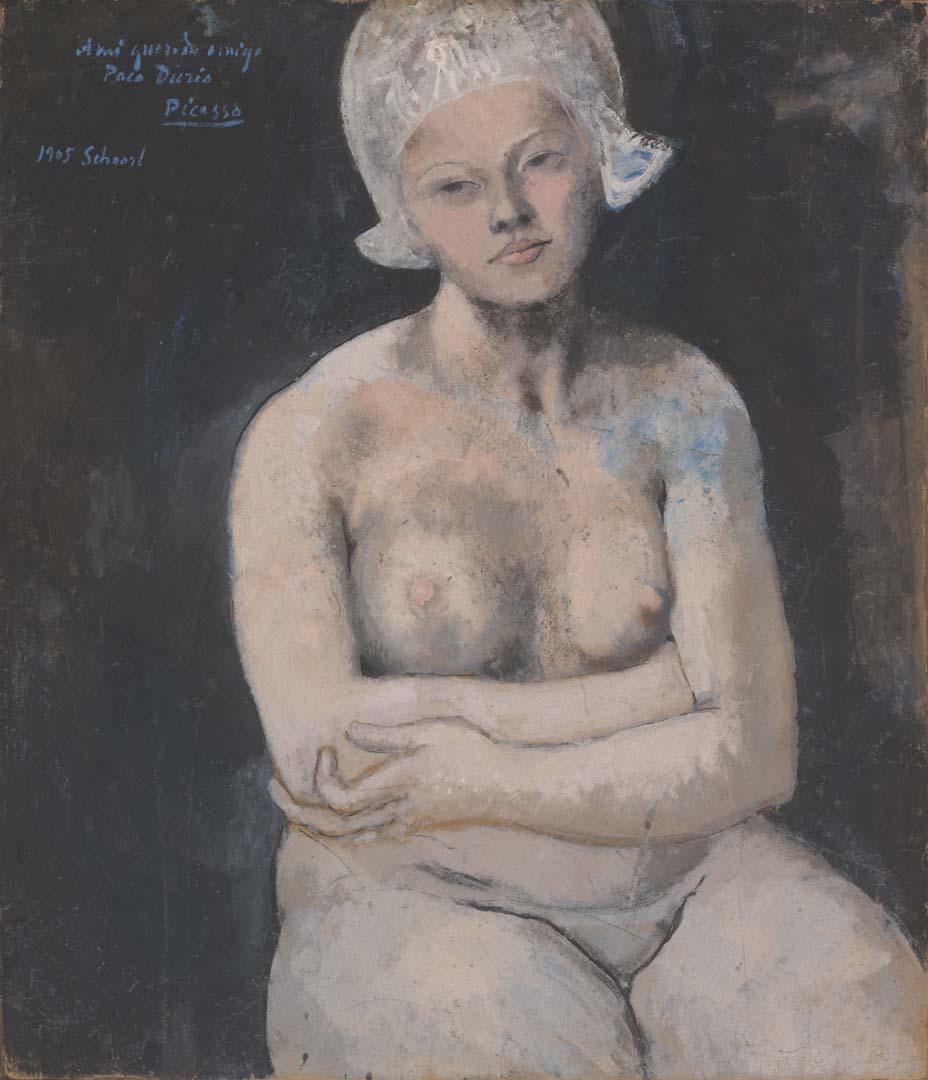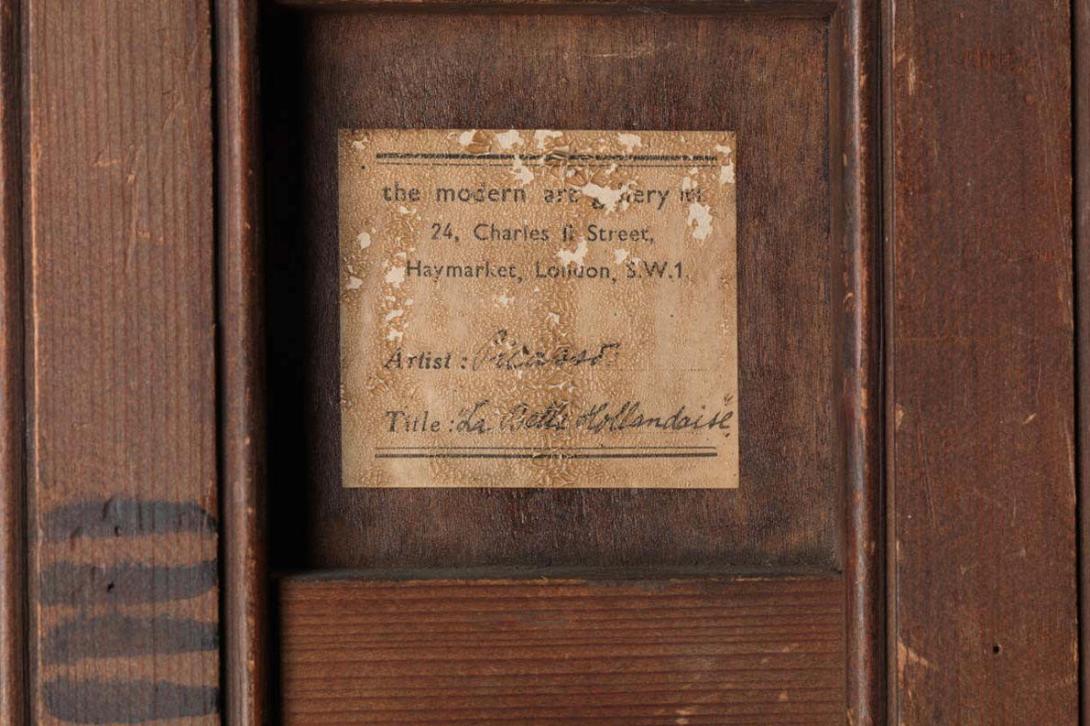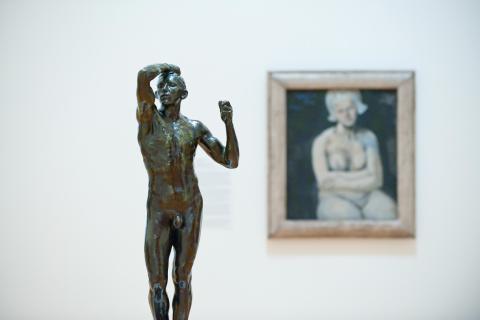How La Belle Hollandaise was made
La Belle Hollandaise (‘the beautiful Dutch woman’) was painted in 1905 when Picasso, invited by Tom Schilperoort — a young Dutch journalist living in Paris — spent the months of June and July in the Netherlands. He worked in the small towns of Schoorl and Schoorldam in Northern Holland, which at the time were generally unspoiled by modernisation and retained a lot of their traditional character. Some of the things that seem to have impressed Picasso were the picturesque houses, the windmills, and especially the local women and their traditional costumes.

In Holland, Picasso produced a number of landscape and figure drawings as well as three paintings, the most important being La Belle Hollandaise. These three works were painted on identically sized pieces of cardboard that the artist would have sourced in Holland, judging from his description of his quick preparation for the trip:
‘I had a knapsack,’ — here Picasso made the gesture of passing a strap over his shoulder — ‘and I put my colours into it. The brushes wouldn't fit at first, but I broke the handles, stuffed them in and off I went.’

Pablo Picasso / La Belle Hollandaise (verso) 1905 / Gouache, oil and chalk on cardboard laid down on wood / Purchased 1959 with funds donated by Major Harold de Vahl Rubin / © Succession Picasso/Copyright Agency
The cardboard support made the works particularly fragile and it was probably for that reason that, in later years, La Belle Hollandaise was mounted on a wooden panel. From a distance, the texture of La Belle Hollandaise is reminiscent of the faded, flat surface of an old fresco. Close examination, however, reveals a very sculptural treatment of the painting materials, with several areas covered by more than one layer of paint while others consist of just the surface of the board.
In La Belle Hollandaise, Picasso has used both the blue and pink tones from his ‘blue’ and ‘rose’ periods. The gentle mood of La Belle Hollandaise retains the serenity of his ‘rose’ period. The volumetric and geometrical approach to the figure, however, is a new development and foreshadows the artist’s cubist directions.
You can watch footage of the 1959 auction at which Queensland Art Gallery acquired this work, courtesy the Walter J Brown Media Archives.

La Belle Hollandaise 1905
- PICASSO, Pablo - Creator


